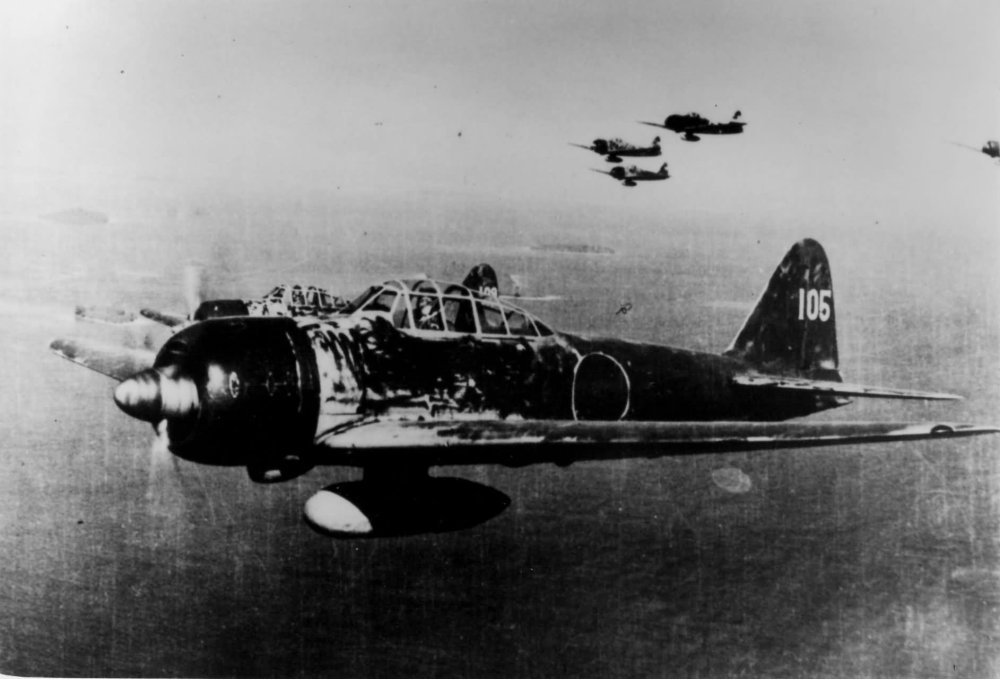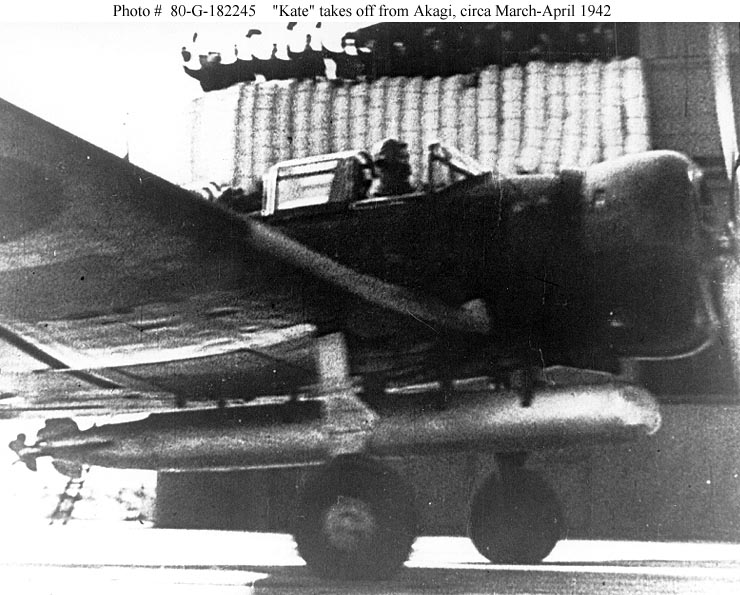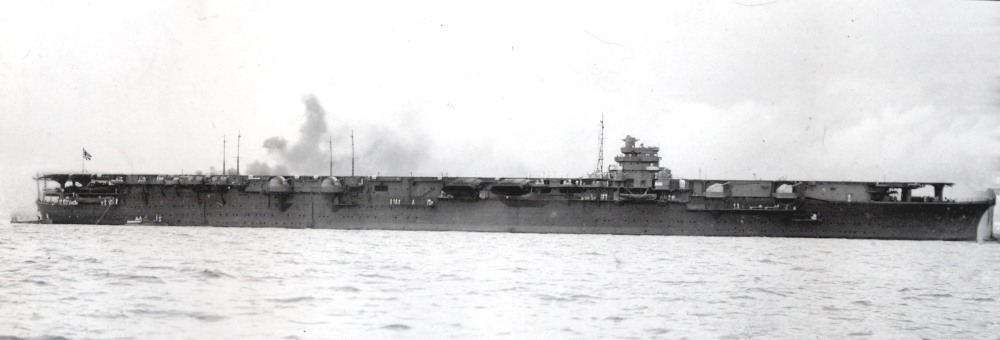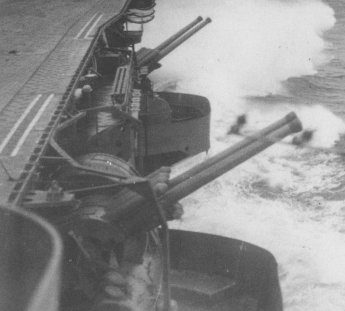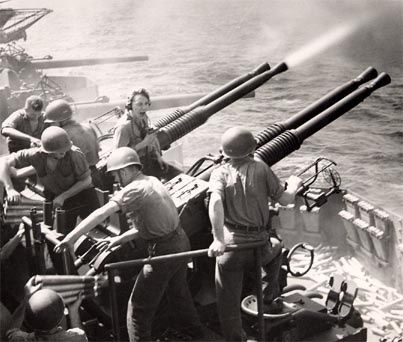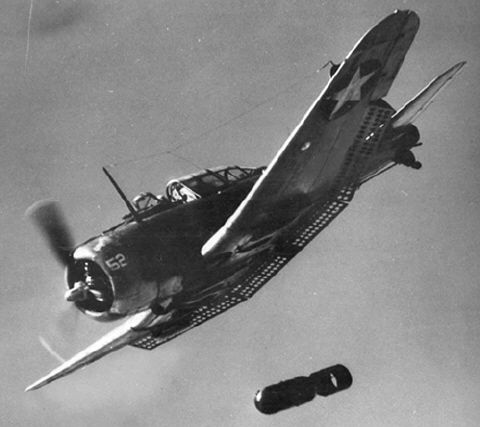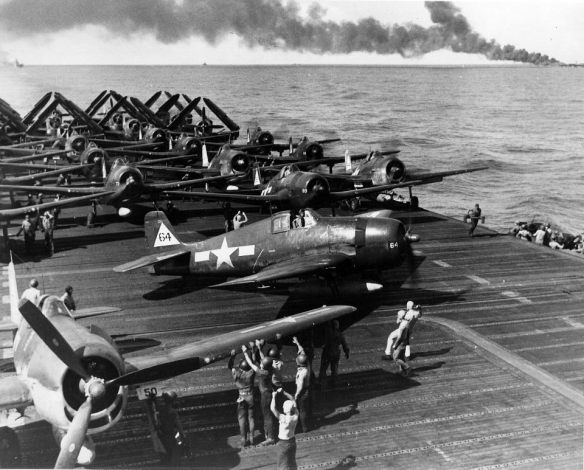monitor
ELITE MEMBER

- Joined
- Apr 24, 2007
- Messages
- 8,571
- Reaction score
- 7
- Country
- Location
The Great WW2 Aircraft Carrier Showdown : Imperial Japanese Navy v/s US Navy
Posted on December 2, 2016 by N.R.P
INTRODUCTION
The Pacific War [7 December 1941 – 2 September 1945] between the Imperial Japanese Navy (IJN) and the United States Navy (USN) is mainly remembered for its aircraft carrier actions. In fact, the aircraft carrier balance was to decide the fate of the conflict. During the first six months of the Pacific War, the IJN wreaked havoc in the southwestern Pacific and the Indian Ocean. It was only after the Battle of Midway [June 1942] that the Japanese lost the initiative in the Pacific and were forced to take a defensive posture. At Midway, the USN inflicted a critical blow to the IJN, sinking four of its fleet carriers.

The badly damaged IJN aircraft carrier Hiryū at Midway, shortly before becoming a submarine
From this point onwards, the Americans took initiative and started to build-up their carrier force before leapfrogging towards the Japanese home islands. However, before the war, both navies believed that the outcome of the conflict would be decided by a gigantic clash of battleships. In fact, the role and capabilities of the aircraft carrier were still unclear and veteran officers of both the navies were strongly attached to their battleships. The rise of the aircraft carrier in favor of the good old battlewagons proved to be a complicated issue to manage.
This article by Yann Menetrey from Switzerland, a guest author for Defencyclopedia, will cover the development of the aircraft carrier during the Inter-war period in both the IJN and USN and will try to offer a comparison between aircraft carrier doctrines and designs on both sides.
DEVELOPMENT OF AIRCRAFT CARRIERS
Both the United States and Japan had to keep the carrier construction within the constraints of the 1922 Washington Naval Treaty (It was a treaty among the major nations that had won World War I, which agreed to prevent an arms race by limiting naval construction). However, the USN was permitted 135,000 tons of aircraft carriers while the IJN was only allowed 81,000 tons. Interestingly, the two navies shared a similar design progression. Both started with an experimental carrier, serving as technology demonstrators,to gain experience. They were progressively followed by improved designs.
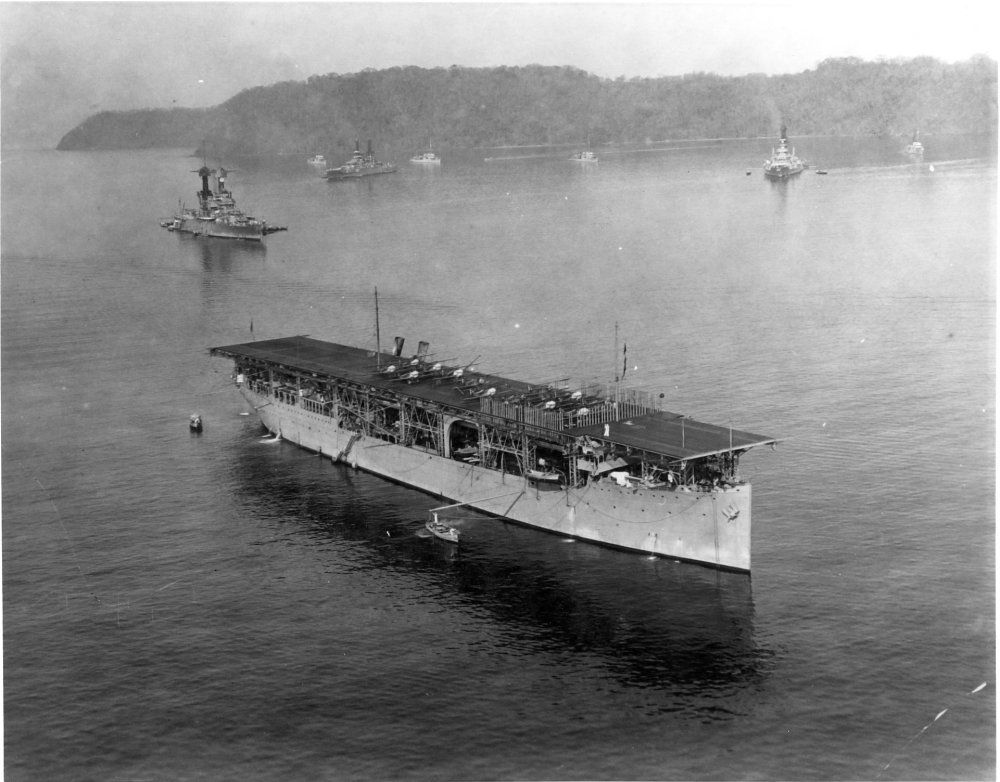
USS Langley (CV-1) seen in 1923. Her open hangar design is clearly visible here
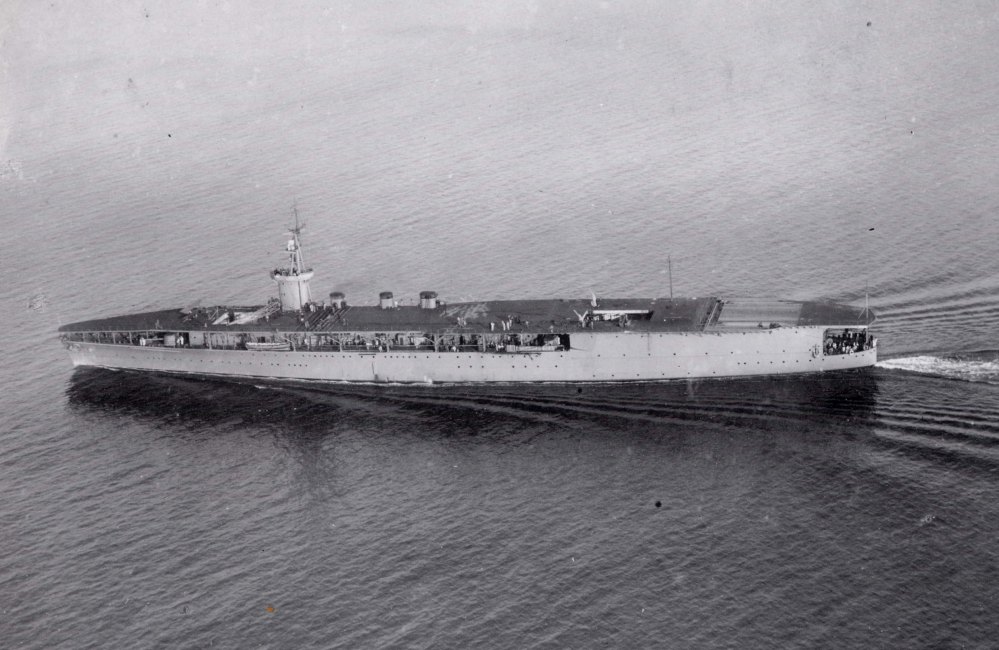
Hōshō conducting trial flights in Tokyo Bay, Japan, December 1922.
The Hōshō and the Langley were small ships with a limited air group, displacing 9,500 and 13,900 tons respectively. Next came the first fleet carriers, all being conversions from capital ships.
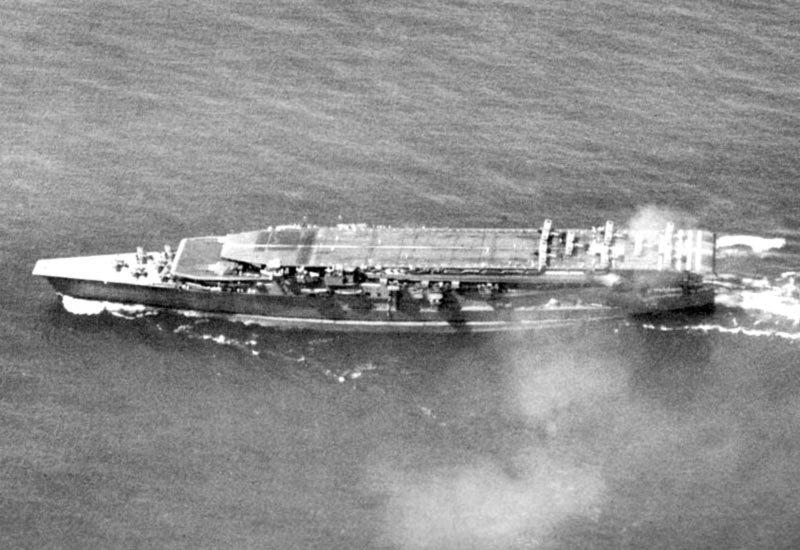
IJN Kaga

USS Saratoga
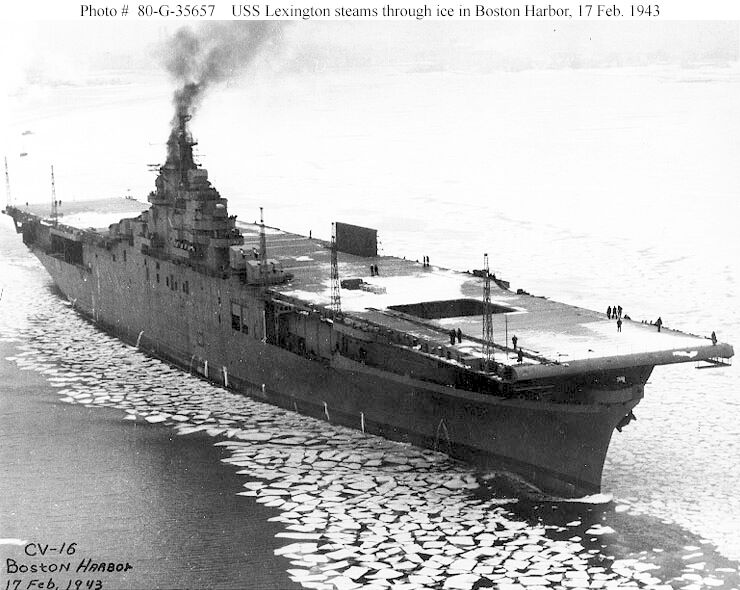
USS Lexington
As the function and the place relative to the battle line of the carrier were still uncertain, both American and Japanese carriers received heavy cruiser caliber guns for defense against cruisers and destroyers. This was followed unique units to mature the aircraft carrier technology. In
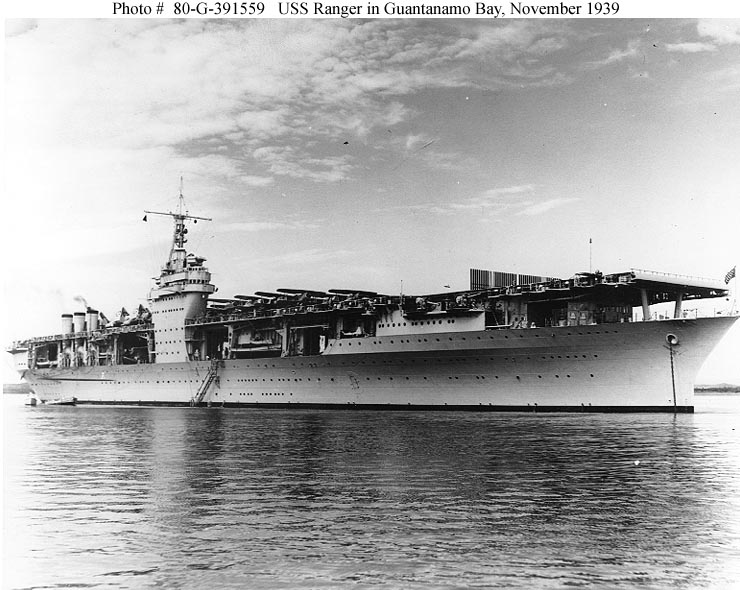
USS Ranger

IJN Ryūjō
Japan then built two additional fleet carriers, the Sōryū and the Hiryū. The Japanese further improved their technology with these two ships and reached a “standard design” that would be re-used later during the war with the Unryū-class. Finally, both navies’ carrier technology pinnacled with a well balanced and more sophisticated design: the Shōkaku-class for the IJN and the Yorktown-class for the USN.
Posted on December 2, 2016 by N.R.P
INTRODUCTION
The Pacific War [7 December 1941 – 2 September 1945] between the Imperial Japanese Navy (IJN) and the United States Navy (USN) is mainly remembered for its aircraft carrier actions. In fact, the aircraft carrier balance was to decide the fate of the conflict. During the first six months of the Pacific War, the IJN wreaked havoc in the southwestern Pacific and the Indian Ocean. It was only after the Battle of Midway [June 1942] that the Japanese lost the initiative in the Pacific and were forced to take a defensive posture. At Midway, the USN inflicted a critical blow to the IJN, sinking four of its fleet carriers.

The badly damaged IJN aircraft carrier Hiryū at Midway, shortly before becoming a submarine
From this point onwards, the Americans took initiative and started to build-up their carrier force before leapfrogging towards the Japanese home islands. However, before the war, both navies believed that the outcome of the conflict would be decided by a gigantic clash of battleships. In fact, the role and capabilities of the aircraft carrier were still unclear and veteran officers of both the navies were strongly attached to their battleships. The rise of the aircraft carrier in favor of the good old battlewagons proved to be a complicated issue to manage.
This article by Yann Menetrey from Switzerland, a guest author for Defencyclopedia, will cover the development of the aircraft carrier during the Inter-war period in both the IJN and USN and will try to offer a comparison between aircraft carrier doctrines and designs on both sides.
DEVELOPMENT OF AIRCRAFT CARRIERS
Both the United States and Japan had to keep the carrier construction within the constraints of the 1922 Washington Naval Treaty (It was a treaty among the major nations that had won World War I, which agreed to prevent an arms race by limiting naval construction). However, the USN was permitted 135,000 tons of aircraft carriers while the IJN was only allowed 81,000 tons. Interestingly, the two navies shared a similar design progression. Both started with an experimental carrier, serving as technology demonstrators,to gain experience. They were progressively followed by improved designs.
- 1922 ⇒ The USN had commissioned the USS Langley (CV-1), in March, but it was a conversion from the collier USS Jupiter (AC-3).
- 1922 ⇒ The IJN commissioned the Hōshō, the world’s first ship designed and built as an aircraft carrier from the onset, in December.

USS Langley (CV-1) seen in 1923. Her open hangar design is clearly visible here

Hōshō conducting trial flights in Tokyo Bay, Japan, December 1922.
The Hōshō and the Langley were small ships with a limited air group, displacing 9,500 and 13,900 tons respectively. Next came the first fleet carriers, all being conversions from capital ships.
- 1927 ⇒ The IJN commissioned the Akagi
- 1927 ⇒ The USN commissioned USS Lexington (CV-2) & USS Saratoga (CV-3)
- 1928 ⇒ The IJN commissioned the Kaga

IJN Kaga

USS Saratoga

USS Lexington
As the function and the place relative to the battle line of the carrier were still uncertain, both American and Japanese carriers received heavy cruiser caliber guns for defense against cruisers and destroyers. This was followed unique units to mature the aircraft carrier technology. In
- 1931 ⇒ The IJN commissioned the Ryūjō, a light aircraft carrier built to exploit a loophole in the Washington Naval Treaty. In fact, the treaty stated that carriers under 10,000 tons weren’t regarded as “aircraft carriers”.
- 1934 ⇒ The USS Ranger (CV-4) was commissioned and was the first American carrier built and designed as an aircraft carrier from the start.

USS Ranger

IJN Ryūjō
Japan then built two additional fleet carriers, the Sōryū and the Hiryū. The Japanese further improved their technology with these two ships and reached a “standard design” that would be re-used later during the war with the Unryū-class. Finally, both navies’ carrier technology pinnacled with a well balanced and more sophisticated design: the Shōkaku-class for the IJN and the Yorktown-class for the USN.

